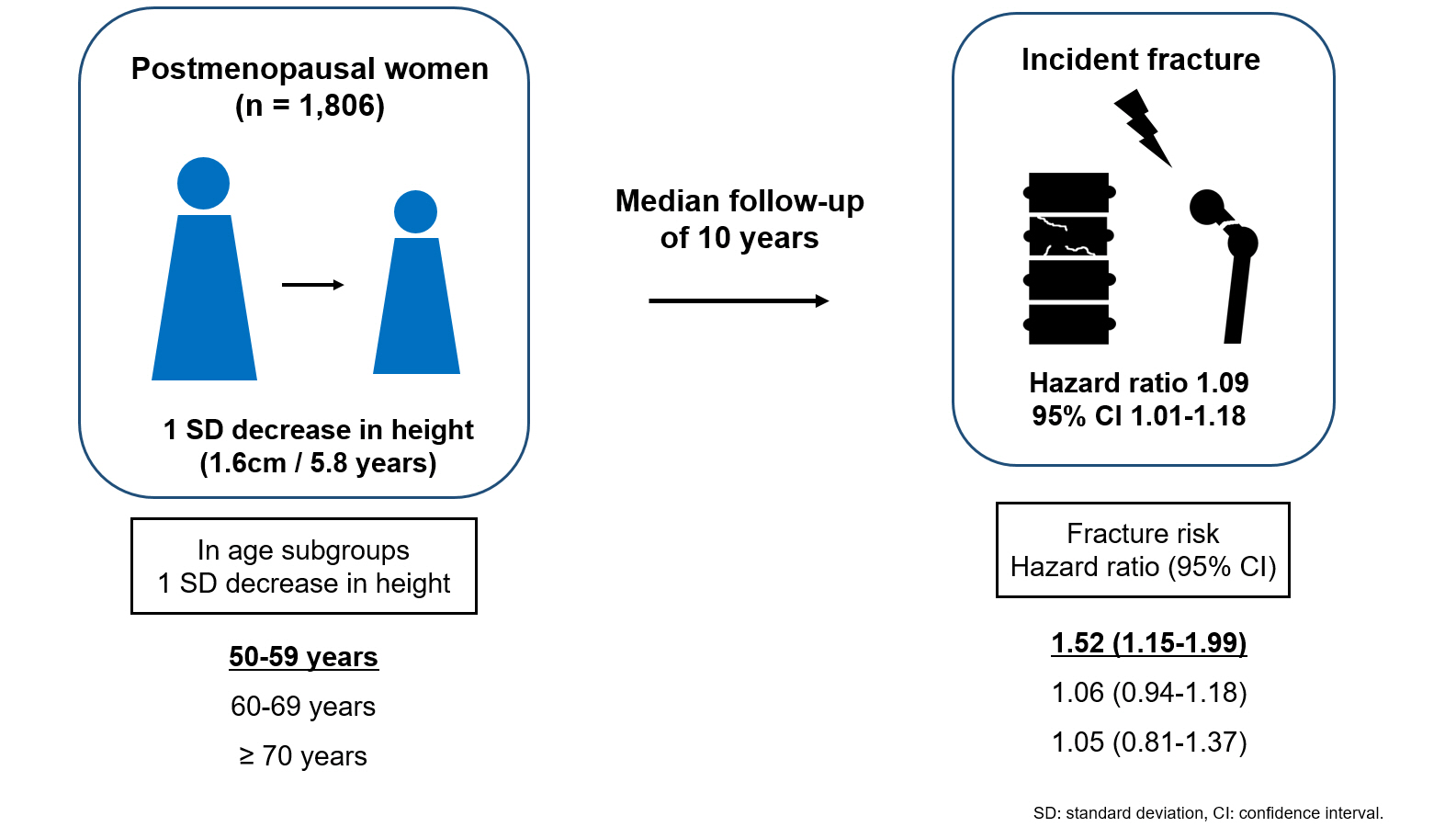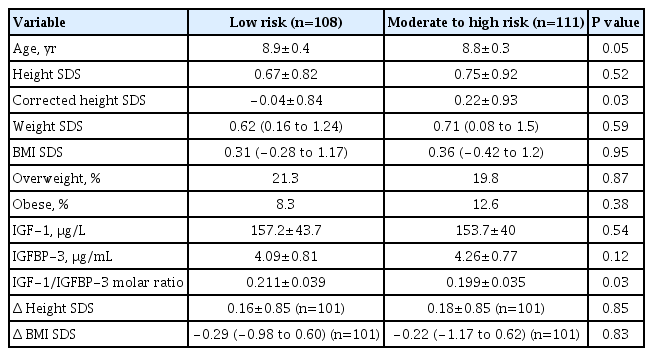Search
- Page Path
- HOME > Search
Original Article
- Calcium & bone metabolism
- Age-Dependent Association of Height Loss with Incident Fracture Risk in Postmenopausal Korean Women
- Chaewon Lee, Hye-Sun Park, Yumie Rhee, Namki Hong
- Endocrinol Metab. 2023;38(6):669-678. Published online September 1, 2023
- DOI: https://doi.org/10.3803/EnM.2023.1734

- 1,417 View
- 84 Download
-
 Abstract
Abstract
 PDF
PDF Supplementary Material
Supplementary Material PubReader
PubReader  ePub
ePub - Background
Height loss is a simple clinical measure associated with increased fracture risk. However, limited data exists on the association between height loss and fracture risk in postmenopausal Korean women. It is unknown whether this association varies with age.
Methods
Data on height loss over a 6-year period were collected from a community-based longitudinal follow-up cohort (Ansung cohort of the Korean Genome and Epidemiology Study). Incident fractures were defined based on self-reported fractures after excluding those due to severe trauma or toes/fingers. The association between incident fractures and height loss was investigated using a Cox proportional hazards model.
Results
During a median follow-up of 10 years after the second visit, 259/1,806 participants (median age, 64 years) experienced incident fractures. Overall, a 1 standard deviation (SD) decrease in height (1.6 cm/median 5.8 years) was associated with 9% increased risk of fracture (hazard ratio [HR], 1.09; P=0.037), which lost statistical significance after adjustment for covariates. When stratified into age groups (50–59, 60–69, 70 years or older), a 1 SD decrease in height remained a robust predictor of fracture in the 50 to 59 years age group after adjusting for covariates (adjusted hazard ratio [aHR], 1.52; P=0.003), whereas height loss was not an independent predictor of fracture in the 60 to 69 (aHR, 1.06; P=0.333) or the 70 years or older age groups (aHR, 1.05; P=0.700; P for interaction <0.05, for all).
Conclusion
Height loss during the previous 6 years was associated with an increased 10-year fracture risk in postmenopausal women in their 50s.

Brief Report
- Diabetes, Obesity and Metabolism
- Growth in Children with HLA-Conferred Susceptibility to Type 1 Diabetes
- Liisa Saare, Aleksandr Peet, Vallo Tillmann
- Endocrinol Metab. 2022;37(1):175-179. Published online February 28, 2022
- DOI: https://doi.org/10.3803/EnM.2021.1262

- 2,425 View
- 91 Download
-
 Abstract
Abstract
 PDF
PDF PubReader
PubReader  ePub
ePub - The incidence of type 1 diabetes (T1D) is increasing throughout the world. This trend may be explained by the accelerator hypothesis. Our study investigated growth, its biochemical markers, and their associations with the development of diabetes-associated autoantibodies (DAAB) in 219 children with genetic risk for T1D. Subjects were divided into risk groups based on their human leukocyte antigen genotype. Children in the moderate- to high-risk group were significantly taller when corrected to mid-parental height and had a lower insulin-like growth factor 1 (IGF-1)/IGF-1 binding protein (IGFBP-3) molar ratio than those in the low-risk group (corrected height standard deviation score 0.22±0.93 vs. –0.04±0.84, P<0.05; molar ratio 0.199±0.035 vs. 0.211+0.039, P<0.05). Children with DAAB tended to be taller and to have a higher body mass index than those with no DAAB. Our results suggest that the accelerator hypothesis explaining the increasing incidence of T1D may not solely be dependent on environmental factors, but could be partially genetically determined.


 KES
KES
 First
First Prev
Prev



